Out of the night,
When the full moon is bright,
Comes the horseman known as Zorro.
This bold renegade,
Carves a "Z" with his blade,
A "Z" that stands for Zorro.
Zorro, Zorro, the fox so cunning and free,
Zorro, Zorro, who makes the sign of the Z.
He is polite,
But the wicked take flight
When they catch the sight of Zorro.
He's friend of the weak,
And the poor and the meek,
This very unique senor Zorro.
Zorro, Zorro, the fox so cunning and free,
Zorro, Zorro, who makes the sign of the Z.
Zorro, Zorro, Zorro, Zorro, Zorro.
Six days before my 11th birthday in October of 1957 I first heard those lyrics by Norman Foster. The show was Walt Disney's "Zorro" and without commercials each program on the ABC television network ran 22 to 24 minutes every Tuesday and Thursday. This was my first meeting with Don Diego de la Vega whose secret identify was the Spanish fighter for the rights of the peons and others in Old California: "El Zorro (The Fox)".
PART ONE: THE MARK OF ZORRO AND THE CLIFFHANGERS
This is a look at this popular character as he appeared in both motion pictures and television around the world.
The year was 1919 and writer Johnston McCulley wrote a serialized story entitled "The Curse of Capistrano" which appeared as five installment in "All-Story Weekly". The first book version of the novel would be published by Grosset and Dunlap in 1924 under the title of the 1920 motion picture "The Mark of Zorro". For those interested several versions of the novel are available as E-books for as little as 99 cents.
I admit I am not interested in the accuracy of Johnston McCulley's portrayal of life in Spanish California. Although he created his hero from the mythic life of California Outlaw Joaquin Murrieta. Known as "The Robin Hood of El Dorado".
I look at McCulley's work as pure escapism and not a historical recreation of life at the time, if we were to approach every novel, screenplay, or tale told for authenticity. We might be stopping to check facts and events every few paragraphs and loose our train of thought.
However, I believe it is a valid point of view and to that I have attached a link to a very good article "The Trouble with Zorro, Part One: The Curse of Capistrano" by David W. Rickman. Mr. Rickman's article does look at the inaccuracies this historian sees in McCulley's tale.
http://davidwrickman.blogspot.com/2014/12/the-trouble-with-zorro-part-1-curse-of.html
Speaking of inaccuracies could there have been a real "Zorro"? Who came not from Spain or Spanish California, but Ireland? The following link comes from the website for the magazine "History Ireland". It tells the story of Richard Lamport born in Ireland either in 1611, or 1615. Who became the model according to the article's author for Johnston McCulley's hero Don Diego. There are some interesting points made especially, if you happen to be a Freemason.
http://www.historyireland.com/early-modern-history-1500-1700/the-man-behind-the-mask-of-zorro/
Returning to the point of my article. The first screen treatment of McCulley's work was by Douglas Fairbanks, Sr. and his wife Mary Pickford. The film was produced by "The Douglas Fairbanks Corporation" and had the distinction of being the first motion picture released by United Artists. A company formed by Fairbanks, Pickford, Charlie Chaplain and D.W. Griffith. The screenplay was by Fairbanks and Eugene Miller.

The movie kept to the basics of the original story. The villain of the piece was Captain Juan Ramon, but more brutal was Sergeant Pedro Gonzales. Walt Disney 37 years later would make both a name and personality change to the Sergeant for his television series. In that series we meet Sergeant Demetrio Lopez Garcia. The brutality of McCulley's original Sergeant was out and the buffoonery of Garcia was in for a family show.
In the 1920 picture the major role of Sergeant Gonzales was played by Noah Beery, Sr. Who added the "Senior" for the first time to the end of his name for the credits on "The Mark of Zorro", because his young son Noah Beery, Jr. was appearing in his first on screen role as a young peasant boy. The small addition was to avoid the confusion of the credits showing two Noah Beery's in one motion picture. Berry was also the brother of actor Wallace Beery.
Below Fairbanks and Noah Beery, Sr.
.
Fairbanks as Diego
Below Fairbanks and his leading lady Margurite De La Motte as Lolita Pulido. Miss De La Motte would appear with Fairbanks as Constance in his productions of Alexander Dumas' "The Three Musketeers" and also "Iron Mask". The "Iron Mask" made in 1929 would become like many other pictures of that year part silent and part talkie caught in the effect from Al Jolson's "The Jazz Singer".


Another interesting cast note was of another boy playing with Noah Berry, Jr. as a peasant child. The young actor was Milton Berle appearing without screen credit. Berle would become a comedian and from 1948 through 1955 star on NBC's "Texaco Star Theater". "Uncle Miltie" the first of two nicknames Berle would be known by, became the first major star in the new medium of television and earned his second nickname "Mr. Television".
1920's "The Mark of Zorro" would be followed by 40 other motion pictures made in several different countries. Along with 5 Cliff Hanger Serials and 12 television programs. Obviously I am not going to mention every one in detail, but choose titles I believe are important.
In 1925 Douglas Fairbanks was back as both father and son. Along with the only other returning actor from the first film Tote De Crow once more as the faithful mute servant Bernardo.
The film was "Don Q: Son of Zorro".


The cast of this silent included three actors who would go on to major supporting actor roles in the 1930's and 1940's. They were Donald Crisp, Warner Oland and Jean Hersholt. Playing Douglas Fairbanks loved interest was a young Mary Astor who would give Humphrey Bogart problems in John Huston's "The Maltese Falcon".

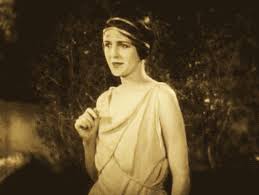
The novel the film was based upon was called "Don Q's Love Story" by the popular early 20th Century mother and son writing team of Kate and Hesketh Hesketh-Prichard. Yes the son's first name was the maiden name of his mother. This story was written in 1909 ten years before Johnston McCulley created the character of Zorro and was reworked into a Zorro story by Fairbanks.
According to the novels 1909 review in "McBride's Magazine":
Apparently there was a movie "A la maniere de Zorro (In the Way of Zorro)" made in Belgium during 1926. It was based upon "The Curse of Capistrano" and it is listed as a comedy. We have the cast, but no other information of this silent work., Should you look on YouTube the title is there for a two minute and forty second piece of music, but with images from the Walt Disney television program.
It would be 10 years before the next motion picture adaptation of McCulley's novel was made. It came from the one year old Republic Pictures. The movie "The Bold Caballero" uses the characters of Don Diego and Zorro in a new story set in "Spanish California" and was released on December 1, 1936. The film has the double distinction of being the first "talkie" Zorro motion picture and surprisingly for the costs involved was shot in an early color film process. Both making this movie very important to the filmed history of "El Zorro".

As the above poster indicates Diego Vega was played by actor Robert Livingston. Livingston would be mostly remembered for two roles. The first was as the character Stony Brooke in the Republic Pictures "B" Western series "The Three Mesquiteers". The other two Mesquieteers were played by Ray "Crash" Corrigan and Syd Saylor. Livingston left the series and was replaced by an out of work actor named John Wayne in the same role. The other character that Livingston is remembered for is the "Lone Ranger" in the mostly lost Republic serial "The Lone Ranger Rides Again" in 1939. The Ranger's first appearance had been in another serial the previous year with another actor in the role.


The plot has Zorro captured and sentenced to be executed for the murder of the Governor of California. Of course there is romance in the air between Diego and the Governor's daughter Lady Isabella Palma played by Heather Angel. Angel came to the United States from England. It was there in 1932 that she played Beryl Stapleton in a forgotten version of Arthur Conan Doyle's "The Hound of the Baskervilles".Later in Angel's career she would appear in the Alfred Hitchcock classic "Lifeboat" and supply the voices for Alice's sister in Walt Disney's animated "Alice in Wonderland"and Mrs Darling in Disney's animated "Peter Pan".
Of course Diego/Zorro is innocent and proves that it was Commandante Sebastian Golle. When Golle placed the letter "Z" on the body of Isabella's father to show that Zorro killed him. He made the stupid mistake of making the letter "Z" backwards.
The first of the Republic Zorro serials was released on November 30, 1937. "Zorro Rides Again" was a 12 Chapter story set in that year involving the Great Grandson of the original Zorro.

John Carroll was cast as James Vega and Zorro and actually sang the theme song. Carroll would play opposite John Wayne in 1942's "Flying Tigers" among many "B" leading man roles.


Obviously in this serial's plot Don Miguel Vega doesn't remember his family history too well. When he asks his Grandson for help. James appears to him as useless and not interested in anything but himself like the original Diego. After all these decades James is able to find the original Zorro's hideout and operates against a typical "B" Western gang attempting to stop a railroad. Outside of the Zorro connection this could have been any other modern setting "B" Western being turned out at in mass at the time.
A little more interesting was Republic's "Zorro's Fighting Legion". Also 12 Chapters in length and officially released on December 16, 1939. For one thing actor Reed Hadley actually plays the original "Zorro". Hadley was a solid "B" actor and would appear in two excellent "B" motion pictures by director Sam Fuller. One was "The Baron of Arizona" were he went up against Vincent Price as the real life James Reavis. Reavis pulled the greatest swindle in American History by forging documents that through his marriage to a specific Spanish girl made him legitimately "The Baron of Arizona". As a result this actually restored the Arizona Territories taken from Mexico to the James Reavis and his wife. In short what we now call the states of Arizona, New Mexico, Utah and Nevada. Hadley played the government agent sent after Price.
The second film was Sam Fuller's classic "I Shot Jesse James" with Hadley as Jesse and John Ireland as the troubled Bob Ford. The film tells of the relationship between the two men and the last days of Robert Ford. Both motion pictures are highly recommended by Motion Picture Historians.


In the serial Zorro finds himself taking over the fight against the mysterious"Don del Oro (Lord of Gold)". Who plans to become Emperor of Mexico by using the Yaqui Indians. The original leader of the legion is killed by del Oro and his men. What was interesting, if not somewhat silly, is that all of the "Fighting Legion" wear Zorro outfits and masks after Don Diego takes charge. So in some scenes you have groups of Zorro's raiding together.
Two last points about this actually good serial, In each episode there is one Yaqui informant about to reveal who Don del Oro is, but in each case as they start to say:
I now come to the motion picture considered to be the definitive version of Johnston McCulley's original novel. The 1940 production of "The Mark of Zorro".




All the above posters make it clear that Tyrone Power is Don Diego Vega/Zorro. His co-star was Linda Darnell as Lolita Quintero, but only two posters mention Basil Rathbone. Who is a perfectly cold and calculating Captain Esteban Pasquale.
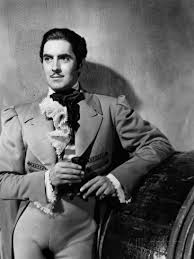
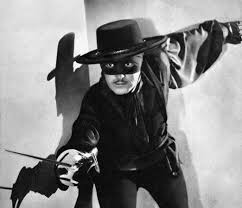


The plot is simple, but full of action, comedy and romance. Don Luis Quintero the Uncle of Lolita has forced Diego's father out of his position as Alcade. Don Quintero now rules Los Angeles through his henchman Esteban. When Diego arrives home from Spain and hears what is going on. He becomes the foppish dandy as a cover. There are some great bits between Power and Rathbone and Power and Darnell that with Power's delivery of his lines and use of mannerisms just crack me up. One such sequence has Diego as Zorro hiding from the soldiers by posing as a friar. In comes Lolita and starts her confession of sins to the Friar who is really Diego. She then realizes there is something strange about him and wants to see his face. At the end of the scene Lolita notices the boots the friar is wearing and knows its Zorro. Here are a couple of stills from the scene.


Of course there is an arranged marriage between Lolita and Diego which she wants nothing to do with as she has fallen for the handsome Zorro.
The climax comes when Quintero who had taken over the Vega home finds a secret passageway that leads to the discovery that Diego and Zorro are one and the same. This is followed by a great sword duel between Tyrone Power and Basil Rathbone that both actors did themselves. Rathbone taught both Power in this film and previously Errol Flynn in "The Adventures of Robin Hood" as Basil was considered a master swordsmen. The sword fight ends with the death of Esteban and the capture of Diego by Qunitero,


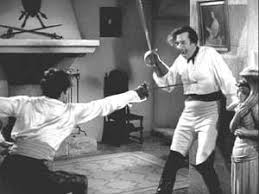
With Esteban killed Quintero arrests Diego, but things do not go as he plans and in the end along with his wife the two are sent back to Spain, Diego's father is once more Alcade and Lolita is set to marry the now revealed "El Zorro".
Playing one of Don Diego's fellow cadets at the start of the movie was Robert Lowery. In 1949 Lowery would be the second actor to play "Batman" in the Columbia serial "Batman and Robin". Which brings us to the "Zorro" connection with Bruce Wayne.
Below Robert Lowery with Tyrone Power

Robert Lowery as Bruce Wayne/Batman
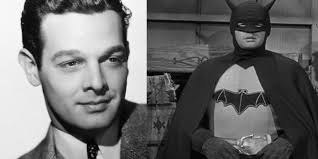
A November 12, 2014 article on the website "CBR Comic Book Resources" shows some pictures of the sets being prepared for the movie "Batman vs Superman". Of interest is the movie theater set that the Wayne family leave after the movie. Next, as all Batman fans know, Bruce's parents are killed. It is showing "The Mark of Z" and a poster on the theater is of the 1940 Tyrone Power/Linda Darnell motion picture. Here is a link to that article:
http://www.comicbookresources.com/?page=article&id=57047
The point here is that according to DC Comics Bruce Wayne's parents were killed after they saw "The Mark of Zorro" with Tyrone Power. However, the series of "Batman" comics written by Scottish comic book writer Alan Grant had the event occur when the Wayne Family saw the Douglas Fairbanks 1920 version. You can choose, but "Batman" creator Bob Kane stated he was inspired by the 1920 film and used the ideas of dual identity, "Zorro's Cave" and costume to create his character. One other point is that "Batman" was created before the Tyrone Power version. In the animated series "Justice League Unlimited" a flashback shows "The Mark of Zorro" was playing at the moment of Bruce's parent's murder.
It would be four more years before the name of "Zorro" was seen on the big screen and in this case there was a slight change in gender. Once more Republic released a serial and this one was titled:
"Zorro's Black Whip". The problem with this production is that the title character Zorro was nowhere to be seen and it was Republic Pictures just playing off the still money making Tyrone Power film. Republic had actually attempted to obtain the use of the character, but 20th Century Fox had it locked in. However, there was no lock on using the name. So Republic lied to the serials potential audience.

For 12 exciting Chapter "The Black Whip" was played by Linda Sterling dressed in a Zorro costume, but not allowed to be called Zorro. "The Black Whip" fought corrupt politicians in Idaho.


On January 18, `1947 Republic Pictures released its fourth Zorro serial "The Son of Zorro". To begin with there was no "son" in the picture as it takes place right after the Civil War and involves a young man whose ancestor was Zorro. The plot was about a returning Civil War veteran fighting a corrupt politician attempting to take over the territory.



The last Republic serial was released on March 24, 1949 and borrowed part of its story line from "Son of Zorro". As the serial takes place in 1865 it has to have been after April 9th of that year when the Civil War ended, because once more we have a returning Civil War veteran becoming Zorro. However, in this production he is identified as Zorro's Grandson fighting a man who wants to keep the telegraph out of his already controlled territory, What makes this serial interesting is that "the masked man" is played by ex-stunt man and bad guy Clayton Moore.


Clayton Moore's performance in this serial led directly to being offered the title role in the new television show "The Lone Ranger" by one of the Producers who saw "The Ghost of Zorro" several times.
For those of my readers living in Los Angeles county. All five of Republic Studio's serials were filmed in the Wild West setting of Chatsworth with some sequences shot in Simi Valley. For those of my readers unfamiliar with Chatsworth. It is now a suburban residential and business community. In fact unless you read the sign that you just crossed into Chatsworth. There is no way you could tell you weren't in Canoga Park the adjoining community. The Wild West in no more in the San Fernando Valley. Nor for that matter is Republic Studios that gave a small upscale section of North Hollywood it's "Studio City" name. The property was purchased outright by CBS in 1967.
PART TWO: WALT DISNEY, ITALY AND SPAIN
Zorro returned to the big screen in what apparently was partly a comedy from Italy in 1952. The title was "ll sogno di Zorro (The Dream of Zorro)". In a cast of 23 actors not one is listed as playing the role of Zorro or Don Diego, but all the leads play multiple roles. This Italian film was remade in 1975 under the same title and here is a description for that newer film from IMDb by Salvadore Santangelo:
It should be noted that the character names changed between the 1952 and 1975 versions, but the story remains the same.
What makes the 1952 film interesting are two actors in it. One had the 2nd billing and the other the 15th.
The 2nd billed actor was Vittorio Gassman whom I found out does play Zorro. However, his two character names according to the screen credits are Don Antonio and Juan, but not Zorro. The English speaking actor would play Anatol Kuragin in the 1956 American/Italian production of Leo Tolstoy's "War and Peace" directed by King Vidor. The picture starred Henry Fonda and Audrey Hepburn. Gassman was 4th billed behind Mel Ferrer and before Herbert Lom who played Napoleon.
Gassman as Don Antonio aka Zorro
The 15th billing went to actress Sofia Scicolone playing Conchita.


She would eventually try a different name calling herself Sophia Loren.
The following year, 1953, saw the first Spanish film "La montana sin ley (Lawless Mountain)". For the first time we have a real Spaniard playing Zorro in a motion picture. The film title in France was "Zorro se Demasque (The Mask of Zorro)".
Playing Zorro was Jose Suraez and Isabel de Castro played Maria. The other cast member parts are unknown apparently.


I could not locate any description of the story.
1955 saw the first of a series of films from Spain and Italy. These were about a hero of the poor known as "El Coyote (The Coyote)". The character was a complete imitation of Johnston McCulley's Zorro. The first film of the series stared Abel Salazar and was filmed in Mexico. There would be three others in 1956, 1963 and 1998 shot in Spain.


Here is a link to an article about the series from the website "Filmotech,com"
http://www.filmotech.com/v2/es/FX_RevistaEditorial.asp?ID=2562
The year was 1957 and Walt Disney presented Johnston McCulley's hero on the small screens in America's living rooms. "Zorro's" two seasons consisted of 78 episodes plus 4 one hour specials on Walt's "Disneyland" television program. The tone of the show created fond memories for "Baby Boomers", like myself, who faithfully watched "Zorro" every Tuesday and Thursday afternoon during its initial run on ABC.
The series contained specific story arcs of approximately 13 episodes. Each story arc told one complete adventure and as one ended a completely new one started adding its own characters and plot. These arcs were similar in construct to any of those Zorro Cliff Hangers Republic Studios had made.
Keeping continuity in the different adventures were four roles. Playing Don Diego de la Vega/Zorro was Guy Williams. Williams of course would become Professor Robinson for the 84 episodes of Irwin Allen's "Lost in Space". After trying his hand as the title character in the 1963 German movie "Captain Sinbad".
Playing his mute and supposed deaf servant and confidant was pantomimist Gene Sheldon who began his career in 1934. The reoccurring role of Don Diego's father was played by George J. Lewis. Lewis in 1944 he had played Vic Gordon, Government Agent and love interest for Linda Stirling in "Zorro's Black Whip". He also had a bit part in "The Ghost of Zorro" as a character called Moccasin.
Getting away from the violent Sergeant Gonzalez of the novel and earlier movies. We now had a typical Disney touch with the bungling and lovable Sergeant Garcia portrayed by Henry Calvin. Calvin would appear in Walt Disney's "Toby Tyler, or Ten Weeks in a Circus" as well as appearances on both "The Man from Uncle" and "The Girl from Uncle". Calvin and Sheldon also would be a comic duo, in the style of Laurel and Hardy, in Walt Disney's 1961 version of "Babes In Toyland".
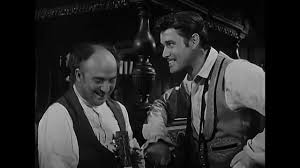



There were an assortment of guest stars and character actors through both seasons.
Probably the three most famous of these were Britt Lomond who played Captain Enrique Sanchez Monasterio the major foe for Zorro during the first story arc. The character is patterned after Basil Rathbone's Captain Esteban Pasquale from the 1940 "Mark of Zorro". Lomond was a television actor who started in 1956 with the popular "Highway Patrol" and acted through 1983. Also he was the production manager on "The Walton's" and "Falcon Crest" and worked as the First Assistant Director on the original "Battlestar Galactica" and "MacGyver".

Cesar Romero was the second of the three major guest stars. He played Esteban de la Cruz, in Season Two, This was Diego's Uncle with a slight bit of larceny in his character and it was somewhat of a major part.

And then there was Mouseketeer Annette Funicello as Anita Campella. The story goes that 16 year old Annette had a major crush on the married Guy Williams at the time and Walt Disney was the only one who knew about it. Disney had the role of Anita created solely to let Annette be in Zorro near who crush. Disney the Romantic.

To illustrate the power of the new medium television. Here are some of the products Walt Disney's "Zorro" created and fans purchased. Believe me when I say this is a very small sample.


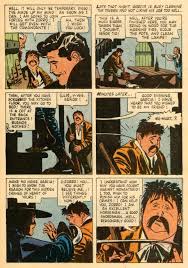


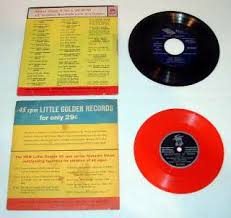




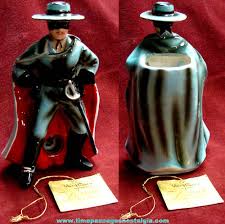
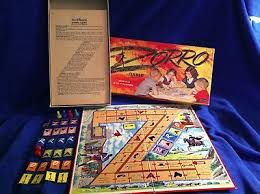
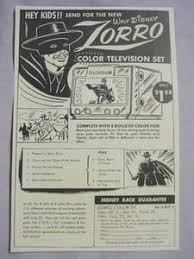
I've mentioned how each episode of a Zorro story arc could be compared to Chapters in a 13 part serial. As far back as the 1930's with Buster Crabbe in "Flash Gordon" and"Buck Rodgers". The studios discovered they could edit the serials into a 60 to 90 minute movie and reissue it in that format. Mostly these re-edits were aimed at the European audiences, Walt Disney had already started this process with shows he ran on the television program "Disneyland". He would have the longer versions on United States television and market a condensed film overseas. Three of the most successful were "Davy Crockett", "Dave Crockett and the River Pirates" and "Dr. Syn Alias the Scarecrow". "Zorro" now became two movies.
The first eventually played in the United States during 1960 under the title of "The Sign of Zorro". It had been originally released overseas in 1958. This motion picture version was created from 8 episodes of the first season. To give you an idea of what the theater audience missed, if each episode was the minimal 22 minutes long. Then 8 ran 176 minutes, but the movie was only 91 or 85 minutes shorter than the original programs as aired.
"The Sign of Zorro" had sat on the Disney shelves for two years after playing overseas and there had been no intention of actually showing in this country. Disney decided to release it in the United States only after the television series was cancelled. The cancellation was the result of a dispute between ABC and Walt Disney over the ownership of "Zorro", the original "Mickey Mouse Club" and the anthology series "Disneyland". As we know today the Disney company got their revenge by buying ABC in 1995.

The second feature film was for Europe only titled "Zorro the Avenger" and was edited from a story arc about Jose Sebastian Varga. Varga became a corrupt dictator known as "The Eagle" who planned to take over all of Spanish California. "Zorro the Avenger" was released in 1959, but never shown in theaters in North America. Both movies can be found on DVD, However, there is another film also called "Zorro the Avenger" with Frank Latimore. So be careful with your ordering.

In 1992 "The Disney Channel" colorized the series and ran it for ten years straight.
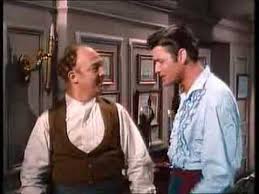
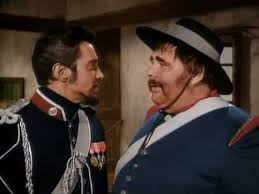
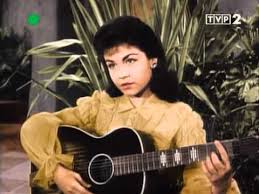
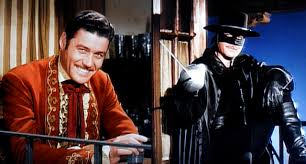
Between 1962 through 1971 there were a series of 17 different Zorro movies produced by Italy and Spain. I have chosen 5 interesting titles as examples. The first film in the group of 17 was titled "Zorro alla corte di Spagna (Zorro at the Spanish Court), but it is the second in the group that I want to first look at.
The picture is the Frank Latimore "La venganza del Zorro (Zorro the Avenger) released in 1962. According to "The Spaghetti Western Data Base" the plot for the movie is:
American actor Frank Latimore plays Don Jose. For a period of time he made films in Europe, but is known to Soap Opera fans for his later work on both "Ryan's Hope" and "The Guiding Light".
Below are shots of Latimore as Zorro from the two films in which he played the role.


.
The following 4 motion pictures were released in 1963.
"Le tre spade di Zorro (The Three Swords of Zorro)" tells how after the murder of his loving wife. Zorro and his two children, all dressed alike, fight a tyrannical governor. What makes this film interesting is that it starred American actor Guy Stockwell. Stockwell appeared in many 1960's films such as "The Warlord" starring Charlton Heston and the excellent "Tobruk" starring Rock Hudson and George Peppard, Over the following years into 1990 Guy Stockwell guest starred on many television shows. In one memorable episode of Scott Bakula's "Quantum Leap" titled "The Right Hand of God". Guy was able to appear with the shows co-star his brother Dean Stockwell who played the holographic Navy Admiral behind the project.



Unfortunately I could not locate any scenes from the movie other than the DVD cover. The next interesting title was "Zorro e l tre moschettien (Zorro and the Three Musketeers)" starring American Gordon Scott as Zorro. Scott had played one of the first educated Tarzan's in six exciting 1950's motion pictures and went to Italy like fellow Body Builder Steve Reeves.




The movie is also known as "Zorro vs the Three Musketeers" and "Mask of the Musketeers". Here is a link to a review from the website "Cool Ass Cinema". Which says the movie is a lot of fun.
http://www.coolasscinema.com/2014/12/zorro-and-three-musketeers-1963-review_8.html
Talk about mixing film styles and history. The Spanish/French/Italian motion picture "Zorro contro Maciste (Zorro Conquers Maciste) becomes in the United States "Samson and the Slave Queen". The character of Zorro becomes Ramon and Maciste becomes Samson. Got that?
The story takes place in the 15th Century (1401-1500) which really is a little late for Samson and too early for Zorro, but its a movie. The plot has a good king dying and leaving his kingdom to his two daughters. Of course one is good and one is very bad. There is a chest containing their father's will which had disappeared. So the bad daughter hires Maciste (Samson) to find it for her. While the good daughter contacts Zorro (Ramon) to come to her aid. The strongman character of Maciste was very popular in a lot of the sword and sandal epics of the period throughout Europe.
Apparently American International Pictures did not think either "Zorro", or "Maciste" which they normally changed to "Goliath" would work in an movie in the United States. To illustrate "Samson and the Slave Queen" was released on a double bill with "Maciste l'erou piu grande del mondo (Macist the Greatest Hero in the World) as "Goliath and the Sins of Babylon" by AIP.
Of interest to fans of Foreign adventure and Western movies is that Zorro is played by the wonderful French actor Pierre Brice in this picture. Although you wouldn't have known Zorro was in the film from the posters used to advertise the movie by American International Pictures.




Brice played Apache Indian Chief Winnetou in 11 motion pictures made in West Germany co-starring either Stewart Granger, or Lex Baxter. They were based upon a highly successful series of Western novels written by German writer Karl May. These films are part of a large group of Foreign made American Westerns from countries that include the Soviet Russia, if you can picture in your mind a Russian American Western, and are mostly overshadowed by the Italian Spaghetti Westerns of the period. The Euro-Westren story makes for interesting reading and I have written an article on the subject for your enjoyment titled "Western Movies European Style".
http://kinescopedreams.blogspot.com/2015/01/from-winnetou-to-sukiyaki-western.html
The 5th Spanish film I want to speak of is "Segno di Zorro, II (Mark of Zorro 2), but somehow became "Duel at the Rio Grande" in English. What makes the film interesting is that playing Zorro is Sean Flynn the son of Errol Flynn. The young Flynn had also starred in the movie "The Son of Captain Blood" playing the son of the first swashbuckling character his father ever played. Sean Flynn was in Vietnam as a photo journalist and wanted to contact the Viet Cong. He disappeared and although remains were returned in 2010. They turned out not to be Flynn's and his disappearance remains still a mystery.




The 5 examples I have given my reader should give you an idea of the type and style of these European Zorro motion pictures. However, here is a list by year of the remaining titles for those of you interested in looking up the motion pictures.
1962
L'ombra di Zorro (The Shadow of Zorro)
1965
El Zorro cabalga otra vez (Behind the Mask of Zorro)
1966
Zorro il ribelle (Zorro the Rebel)
1968
L nipoti di Zorro (The Nephews of Zorro)
1969
Zorro marchese di Navarra (Zorro, the Navarra Marquis)
Zorro alla corte d'lnghilterra (Zorro in the Court of England)
El Zorro justiciero (The Avenger, Zorro)
1970
La ultima aventura del Zorro (No English language release)
1971
El Zorro de Monterrey (No English language release)
Zorro ll cavaliere della vendetta (Zorro, Ride of Vengence)
This brings me to a group of 8 Euro-Zorro's that overlapped his return to television in the United States and I will discuss then in Part Three of this article.
PART THREE: ZORRO RETURNS TO THE TELEVISION SCREEN AND THE FIRST MEXICAN ZORRO MOVIE IS MADE
I want to look at just two of the 8 films I mentioned in the last paragraph of Part Two. The first was made in 1972 as a co-production of the United States, West Germany and France. The title is: "The Erotic Adventures of Zorro". The plot is described on Amazon:
When evil tyrant Luis Bonosario enslaves the people of 19th century Los Angeles, Don Diego de Vega, "the greatest swordsman in Spain," returns from Madrid to make the world safe for truth, justice, and naked women! Posing as a limp-wristed pansy by day (who rides a white donkey while clutching a parasol), Don Diego secretly becomes Zorro at night, "brandishing his long, quick rapier!" When he's not helping the oppressed, fighting duels, or slashing the letter "Z" onto derrieres, Zorro is busy bedding down a gaggle of gorgeous senoritas until he zeros in on Maria, Bonasario's lovely niece. A wild, witty, genuinely funny, big-budget sex comedy from producer David F. Friedman (Trader Hornee), THE EROTIC ADVENTURES OF ZORRO is the Naked Gun of Zorro flicks!
The movie is also known as "The Sexcapades of Don Diego". Should you be interested the film is available "On Demand" from Amazon as it has to be manufactured on a DVD-R.
The Second motion picture I have on DVD and from the first time I saw it. I thought I was watching the old Walt Disney series with Guy Williams and my wife agrees. The film was a 1975 French and Italian co-production simply called "Zorro" and in its own way is a homage to Disney.
Playing Diego de Vega/Zorro is French actor Alain Delon. He is having fun with the part as apparently was director Duccio Tessari with the overall approach to this motion picture. Delon was a major leading man in France and Italy having been seen in such pictures a Luchino Viconte's "Ricco and His Brothers", Michelangelo Antonioni's "L'Eclisse", Viconte's epic "The Leopard" starring Burt Lancaster and Claudia Cardinale. One of his major American film's was "Once a Thief" co-starring Ann Margaret. Alain Delon co-starred in the United States/France/Spain/U.K. co-production "Red Sun" with Charles Bronson and Toshio Mifune.


The movie has been described as "Campy" by many critics and the dubbing is very good for the English language version. The basic story has a friend of Diego's about to take on the Governorship of a South American country called "Nueva Aragon". The friend is murdered and Diego takes over as the previously unseen new Governor.
Playing the villain Colonel Huerta is British Actor Stanley Baker who also was enjoying himself in an over the top performance. Some of Baker's motion pictures include "The Guns of Navarone", "Zulu", 1956's "Helen of Troy" directed by Robert Wise and in the same year "Alexander the Great" starring Richard Burton. Along with Robert Aldrich's "The Last Days of Sodom and Gomorrah" and Lawrence Olivier's production of William Shakespeare's "Richard the III",
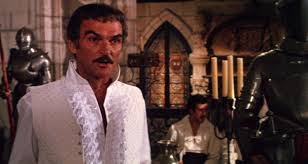

Here are a few other scenes from this movie. Note the hair net on Alain Delon. The characters wear powdered wigs in the film and in this still the new Governor, who is afraid the bandit Zorro might take his life, is speaking to his friend Colonel Huerta.




Keeping the Disney tone to the film is the great French comedian Moustache as Sergeant Garcia in the above black and white still. Also there is a theme song for Zorro as with the Disney television show. Here is a link to the opening title sequence with the song playing behind the opening credits.
https://www.youtube.com/watch?v=FkYwex5Lato
As of this writing the movie was available on YouTube.
The other 6 titles of the 8 Foreign Zorro pictures are:
1972
Les aventires galantes Zorro (Red Hot Zorro) Another Zorro Sex comedy.
1973
ll figlio di Zorro (Son of Zorro)
1974
Le meravigigliose di Zorro (No English language release)
1975
ll sogno di Zorro (Grandsons of Zorro)
La marque de Zorro (The Mark of Zorro)
1976
Ah si? E lo lo dico a Zzzzorro! (Mark of Zorro)
On October 29, 1974 a made for television version of "The Mark of Zorro" appeared. It was designed both as a movie and pilot for a series. The movie did fairly well, but the pilot was not picked up by ABC. The television film has many of its scenes taken directly from the 1940 motion picture including the dialogue.
This production starred Frank Langella in the Don Diego/Zorro role. In 1977 Langella would appear in a revival of "Dracula" on Broadway playing an extremely sexy Count to rave reviews. Two years later he would reprise the role in the John Badham directed motion picture.




Playing the Basil Rathbone part was Ricardo Motalban.


Playing Diego's parents were Gilbert Roland and Yvonne DeCarlo.
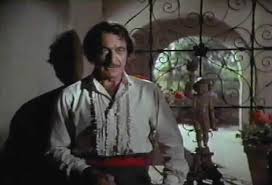
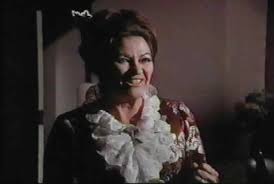
1976 would finally see the first all Mexican production of Zorro. "La gran aventura del Zorro (The Great Adventure of Zorro) was a massive hit in Mexico. Unlike all previous Zorro motion pictures Don Diego is not portrayed as a clumsy dandy, but a typical caballero of his class. He even challenges the local military leader to a duel. However, this Don Diego is cunning and does not push things too far to be considered a possible candidate for Zorro. He was played by Mexican actor Rodolfo de Anda.



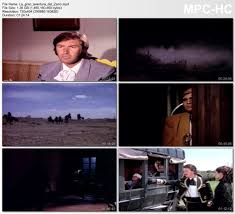
1981 would see two more Spain and Mexico co-productions "El Lobo Negro (The Black Wolf)" which would be followed the same year with one sequel "Duelo a murete (Revenge of the Black Wolf)". Although the Black Wolf's alter ego is Carlos Aceves who is studying in Spain as was Don Diego. Carlos hears from his father, as did Don Diego, that his home of Monterrey, California has been overrun by American Troops. He returns to fight as the masked avenger "The Black Wolf". Can you say Zorro without the names.


1981 also saw the next American made Zorro motion picture. This comedy was "Zorro the Gay Blade" starring George Hamilton. He was nominated for Best Actor by the Golden Globes for the twin roles of Don Diego de la Vega and his gay twin brother Ramon aka: "Bunny" Wigglesworth.

While fighting the tyranny of Captain Esteban and falling in love with American Charlotte Taylor-Wilson. Don Diego de la Vega injures his leg and it appears as if Zorro will not be riding for a long time. Enter Diego's twin brother "Bunny" who just arrived from England and suddenly Zorro starts to make a fashion statement including a Gold Lame outfit.
The excellent cast included Lauren Hutton as Charlotte, Brenda Vaccaro as the Alcalde's sex starved wife and Ron Liebman as Captain Esteban.
The first animated "Zorro" was released in 1981 under the title "The New Adventures of Zorro", It came from Filmation. Voicing the role of Don Diego/Zorro was Henry Darrow. He was known to most television viewers of the 1967 to 1971 series "The High Chaparral" which had the distinction of presenting non-stereo typed Hispanics in major roles.
Next we come to the Walt Disney Company's attempt to reboot the 1957 series. The show was titled "Zorro and Son" and if you have never heard of it I can understand. That is because the series premiered on April 6, 1983 and died after five episodes. Another problem with the ABC series was those five episodes were spread over a period from April 6th through June 1, 1983. Henry Darrow, on the right, played Don Diego and Paul Regina his son Don Carlos.
 \
\
On January 5, 1990 a new Zorro television series premiered on "The Family Channel". It was produced by "New World Television" a subsidiary of "New World Pictures". The 88 episodes were filmed in Spain and the series became known as either"Zorro", "New World Zorro", or "Zorro 1990".
Canadian actor, writer and multi-media artist Duncan Regehr played Don Diego/Zorro. He had appeared in episodes of "Star Trek Deep Space Nine" and played Errol Flynn in the television biographical movie based upon Flynn's autobiography. Additionally Regehr played Dracula in the movie "Monster Squad".


The part of Diego father was played by two different actors. In the first season the part was played by Efrem Zimbalist, Jr. Zimbalist bowed out of the role, because of the constant trips to Madrid for filming. Henry Darrow took over for Seasons 2 through 4.


A slight change in characters had Diego having a teenage mute servant named Felipe played by Spanish actor Juan Diego Botto instead of Bernardo.

Another interesting cast note was of another boy playing with Noah Berry, Jr. as a peasant child. The young actor was Milton Berle appearing without screen credit. Berle would become a comedian and from 1948 through 1955 star on NBC's "Texaco Star Theater". "Uncle Miltie" the first of two nicknames Berle would be known by, became the first major star in the new medium of television and earned his second nickname "Mr. Television".
1920's "The Mark of Zorro" would be followed by 40 other motion pictures made in several different countries. Along with 5 Cliff Hanger Serials and 12 television programs. Obviously I am not going to mention every one in detail, but choose titles I believe are important.
In 1925 Douglas Fairbanks was back as both father and son. Along with the only other returning actor from the first film Tote De Crow once more as the faithful mute servant Bernardo.
The film was "Don Q: Son of Zorro".
The cast of this silent included three actors who would go on to major supporting actor roles in the 1930's and 1940's. They were Donald Crisp, Warner Oland and Jean Hersholt. Playing Douglas Fairbanks loved interest was a young Mary Astor who would give Humphrey Bogart problems in John Huston's "The Maltese Falcon".
The novel the film was based upon was called "Don Q's Love Story" by the popular early 20th Century mother and son writing team of Kate and Hesketh Hesketh-Prichard. Yes the son's first name was the maiden name of his mother. This story was written in 1909 ten years before Johnston McCulley created the character of Zorro and was reworked into a Zorro story by Fairbanks.
According to the novels 1909 review in "McBride's Magazine":
---the character of Don Q is a unique blend of sardonic humor, courtly grace, and unflinching courage. He is, in effect, a modern bandit and stops at nothing to gain his end.Of note is no one is created with playing "Don Q". As the name of Diego's son is Don Cesar de Vega. It appears Fairbanks was counting on the still popular novel's title to help bring in an audience.
Apparently there was a movie "A la maniere de Zorro (In the Way of Zorro)" made in Belgium during 1926. It was based upon "The Curse of Capistrano" and it is listed as a comedy. We have the cast, but no other information of this silent work., Should you look on YouTube the title is there for a two minute and forty second piece of music, but with images from the Walt Disney television program.
It would be 10 years before the next motion picture adaptation of McCulley's novel was made. It came from the one year old Republic Pictures. The movie "The Bold Caballero" uses the characters of Don Diego and Zorro in a new story set in "Spanish California" and was released on December 1, 1936. The film has the double distinction of being the first "talkie" Zorro motion picture and surprisingly for the costs involved was shot in an early color film process. Both making this movie very important to the filmed history of "El Zorro".
As the above poster indicates Diego Vega was played by actor Robert Livingston. Livingston would be mostly remembered for two roles. The first was as the character Stony Brooke in the Republic Pictures "B" Western series "The Three Mesquiteers". The other two Mesquieteers were played by Ray "Crash" Corrigan and Syd Saylor. Livingston left the series and was replaced by an out of work actor named John Wayne in the same role. The other character that Livingston is remembered for is the "Lone Ranger" in the mostly lost Republic serial "The Lone Ranger Rides Again" in 1939. The Ranger's first appearance had been in another serial the previous year with another actor in the role.
The plot has Zorro captured and sentenced to be executed for the murder of the Governor of California. Of course there is romance in the air between Diego and the Governor's daughter Lady Isabella Palma played by Heather Angel. Angel came to the United States from England. It was there in 1932 that she played Beryl Stapleton in a forgotten version of Arthur Conan Doyle's "The Hound of the Baskervilles".Later in Angel's career she would appear in the Alfred Hitchcock classic "Lifeboat" and supply the voices for Alice's sister in Walt Disney's animated "Alice in Wonderland"and Mrs Darling in Disney's animated "Peter Pan".
Of course Diego/Zorro is innocent and proves that it was Commandante Sebastian Golle. When Golle placed the letter "Z" on the body of Isabella's father to show that Zorro killed him. He made the stupid mistake of making the letter "Z" backwards.
The first of the Republic Zorro serials was released on November 30, 1937. "Zorro Rides Again" was a 12 Chapter story set in that year involving the Great Grandson of the original Zorro.
John Carroll was cast as James Vega and Zorro and actually sang the theme song. Carroll would play opposite John Wayne in 1942's "Flying Tigers" among many "B" leading man roles.
Obviously in this serial's plot Don Miguel Vega doesn't remember his family history too well. When he asks his Grandson for help. James appears to him as useless and not interested in anything but himself like the original Diego. After all these decades James is able to find the original Zorro's hideout and operates against a typical "B" Western gang attempting to stop a railroad. Outside of the Zorro connection this could have been any other modern setting "B" Western being turned out at in mass at the time.
A little more interesting was Republic's "Zorro's Fighting Legion". Also 12 Chapters in length and officially released on December 16, 1939. For one thing actor Reed Hadley actually plays the original "Zorro". Hadley was a solid "B" actor and would appear in two excellent "B" motion pictures by director Sam Fuller. One was "The Baron of Arizona" were he went up against Vincent Price as the real life James Reavis. Reavis pulled the greatest swindle in American History by forging documents that through his marriage to a specific Spanish girl made him legitimately "The Baron of Arizona". As a result this actually restored the Arizona Territories taken from Mexico to the James Reavis and his wife. In short what we now call the states of Arizona, New Mexico, Utah and Nevada. Hadley played the government agent sent after Price.
The second film was Sam Fuller's classic "I Shot Jesse James" with Hadley as Jesse and John Ireland as the troubled Bob Ford. The film tells of the relationship between the two men and the last days of Robert Ford. Both motion pictures are highly recommended by Motion Picture Historians.
In the serial Zorro finds himself taking over the fight against the mysterious"Don del Oro (Lord of Gold)". Who plans to become Emperor of Mexico by using the Yaqui Indians. The original leader of the legion is killed by del Oro and his men. What was interesting, if not somewhat silly, is that all of the "Fighting Legion" wear Zorro outfits and masks after Don Diego takes charge. So in some scenes you have groups of Zorro's raiding together.
Two last points about this actually good serial, In each episode there is one Yaqui informant about to reveal who Don del Oro is, but in each case as they start to say:
Don del Oro is....Each of them is killed with a Golden Arrow. The second point was in a small part in the serial the real President of Mexico and Revolutionary Hero Benito Juarez appeared.
I now come to the motion picture considered to be the definitive version of Johnston McCulley's original novel. The 1940 production of "The Mark of Zorro".
All the above posters make it clear that Tyrone Power is Don Diego Vega/Zorro. His co-star was Linda Darnell as Lolita Quintero, but only two posters mention Basil Rathbone. Who is a perfectly cold and calculating Captain Esteban Pasquale.
The plot is simple, but full of action, comedy and romance. Don Luis Quintero the Uncle of Lolita has forced Diego's father out of his position as Alcade. Don Quintero now rules Los Angeles through his henchman Esteban. When Diego arrives home from Spain and hears what is going on. He becomes the foppish dandy as a cover. There are some great bits between Power and Rathbone and Power and Darnell that with Power's delivery of his lines and use of mannerisms just crack me up. One such sequence has Diego as Zorro hiding from the soldiers by posing as a friar. In comes Lolita and starts her confession of sins to the Friar who is really Diego. She then realizes there is something strange about him and wants to see his face. At the end of the scene Lolita notices the boots the friar is wearing and knows its Zorro. Here are a couple of stills from the scene.
Of course there is an arranged marriage between Lolita and Diego which she wants nothing to do with as she has fallen for the handsome Zorro.
The climax comes when Quintero who had taken over the Vega home finds a secret passageway that leads to the discovery that Diego and Zorro are one and the same. This is followed by a great sword duel between Tyrone Power and Basil Rathbone that both actors did themselves. Rathbone taught both Power in this film and previously Errol Flynn in "The Adventures of Robin Hood" as Basil was considered a master swordsmen. The sword fight ends with the death of Esteban and the capture of Diego by Qunitero,
With Esteban killed Quintero arrests Diego, but things do not go as he plans and in the end along with his wife the two are sent back to Spain, Diego's father is once more Alcade and Lolita is set to marry the now revealed "El Zorro".
Playing one of Don Diego's fellow cadets at the start of the movie was Robert Lowery. In 1949 Lowery would be the second actor to play "Batman" in the Columbia serial "Batman and Robin". Which brings us to the "Zorro" connection with Bruce Wayne.
Below Robert Lowery with Tyrone Power
Robert Lowery as Bruce Wayne/Batman
A November 12, 2014 article on the website "CBR Comic Book Resources" shows some pictures of the sets being prepared for the movie "Batman vs Superman". Of interest is the movie theater set that the Wayne family leave after the movie. Next, as all Batman fans know, Bruce's parents are killed. It is showing "The Mark of Z" and a poster on the theater is of the 1940 Tyrone Power/Linda Darnell motion picture. Here is a link to that article:
http://www.comicbookresources.com/?page=article&id=57047
The point here is that according to DC Comics Bruce Wayne's parents were killed after they saw "The Mark of Zorro" with Tyrone Power. However, the series of "Batman" comics written by Scottish comic book writer Alan Grant had the event occur when the Wayne Family saw the Douglas Fairbanks 1920 version. You can choose, but "Batman" creator Bob Kane stated he was inspired by the 1920 film and used the ideas of dual identity, "Zorro's Cave" and costume to create his character. One other point is that "Batman" was created before the Tyrone Power version. In the animated series "Justice League Unlimited" a flashback shows "The Mark of Zorro" was playing at the moment of Bruce's parent's murder.
It would be four more years before the name of "Zorro" was seen on the big screen and in this case there was a slight change in gender. Once more Republic released a serial and this one was titled:
"Zorro's Black Whip". The problem with this production is that the title character Zorro was nowhere to be seen and it was Republic Pictures just playing off the still money making Tyrone Power film. Republic had actually attempted to obtain the use of the character, but 20th Century Fox had it locked in. However, there was no lock on using the name. So Republic lied to the serials potential audience.
For 12 exciting Chapter "The Black Whip" was played by Linda Sterling dressed in a Zorro costume, but not allowed to be called Zorro. "The Black Whip" fought corrupt politicians in Idaho.
On January 18, `1947 Republic Pictures released its fourth Zorro serial "The Son of Zorro". To begin with there was no "son" in the picture as it takes place right after the Civil War and involves a young man whose ancestor was Zorro. The plot was about a returning Civil War veteran fighting a corrupt politician attempting to take over the territory.
The last Republic serial was released on March 24, 1949 and borrowed part of its story line from "Son of Zorro". As the serial takes place in 1865 it has to have been after April 9th of that year when the Civil War ended, because once more we have a returning Civil War veteran becoming Zorro. However, in this production he is identified as Zorro's Grandson fighting a man who wants to keep the telegraph out of his already controlled territory, What makes this serial interesting is that "the masked man" is played by ex-stunt man and bad guy Clayton Moore.
Clayton Moore's performance in this serial led directly to being offered the title role in the new television show "The Lone Ranger" by one of the Producers who saw "The Ghost of Zorro" several times.
For those of my readers living in Los Angeles county. All five of Republic Studio's serials were filmed in the Wild West setting of Chatsworth with some sequences shot in Simi Valley. For those of my readers unfamiliar with Chatsworth. It is now a suburban residential and business community. In fact unless you read the sign that you just crossed into Chatsworth. There is no way you could tell you weren't in Canoga Park the adjoining community. The Wild West in no more in the San Fernando Valley. Nor for that matter is Republic Studios that gave a small upscale section of North Hollywood it's "Studio City" name. The property was purchased outright by CBS in 1967.
PART TWO: WALT DISNEY, ITALY AND SPAIN
Zorro returned to the big screen in what apparently was partly a comedy from Italy in 1952. The title was "ll sogno di Zorro (The Dream of Zorro)". In a cast of 23 actors not one is listed as playing the role of Zorro or Don Diego, but all the leads play multiple roles. This Italian film was remade in 1975 under the same title and here is a description for that newer film from IMDb by Salvadore Santangelo:
General Ruarte has designs on Paco's fianceè Zaira. Paco often dreams of being Zorro and his two servants think of exploiting the situation : they give him sleeping pills which transform him into the undefeatable hero.
It should be noted that the character names changed between the 1952 and 1975 versions, but the story remains the same.
What makes the 1952 film interesting are two actors in it. One had the 2nd billing and the other the 15th.
The 2nd billed actor was Vittorio Gassman whom I found out does play Zorro. However, his two character names according to the screen credits are Don Antonio and Juan, but not Zorro. The English speaking actor would play Anatol Kuragin in the 1956 American/Italian production of Leo Tolstoy's "War and Peace" directed by King Vidor. The picture starred Henry Fonda and Audrey Hepburn. Gassman was 4th billed behind Mel Ferrer and before Herbert Lom who played Napoleon.
Gassman as Don Antonio aka Zorro
The 15th billing went to actress Sofia Scicolone playing Conchita.
She would eventually try a different name calling herself Sophia Loren.
The following year, 1953, saw the first Spanish film "La montana sin ley (Lawless Mountain)". For the first time we have a real Spaniard playing Zorro in a motion picture. The film title in France was "Zorro se Demasque (The Mask of Zorro)".
Playing Zorro was Jose Suraez and Isabel de Castro played Maria. The other cast member parts are unknown apparently.
I could not locate any description of the story.
1955 saw the first of a series of films from Spain and Italy. These were about a hero of the poor known as "El Coyote (The Coyote)". The character was a complete imitation of Johnston McCulley's Zorro. The first film of the series stared Abel Salazar and was filmed in Mexico. There would be three others in 1956, 1963 and 1998 shot in Spain.
Here is a link to an article about the series from the website "Filmotech,com"
http://www.filmotech.com/v2/es/FX_RevistaEditorial.asp?ID=2562
The year was 1957 and Walt Disney presented Johnston McCulley's hero on the small screens in America's living rooms. "Zorro's" two seasons consisted of 78 episodes plus 4 one hour specials on Walt's "Disneyland" television program. The tone of the show created fond memories for "Baby Boomers", like myself, who faithfully watched "Zorro" every Tuesday and Thursday afternoon during its initial run on ABC.
The series contained specific story arcs of approximately 13 episodes. Each story arc told one complete adventure and as one ended a completely new one started adding its own characters and plot. These arcs were similar in construct to any of those Zorro Cliff Hangers Republic Studios had made.
Keeping continuity in the different adventures were four roles. Playing Don Diego de la Vega/Zorro was Guy Williams. Williams of course would become Professor Robinson for the 84 episodes of Irwin Allen's "Lost in Space". After trying his hand as the title character in the 1963 German movie "Captain Sinbad".
Playing his mute and supposed deaf servant and confidant was pantomimist Gene Sheldon who began his career in 1934. The reoccurring role of Don Diego's father was played by George J. Lewis. Lewis in 1944 he had played Vic Gordon, Government Agent and love interest for Linda Stirling in "Zorro's Black Whip". He also had a bit part in "The Ghost of Zorro" as a character called Moccasin.
Getting away from the violent Sergeant Gonzalez of the novel and earlier movies. We now had a typical Disney touch with the bungling and lovable Sergeant Garcia portrayed by Henry Calvin. Calvin would appear in Walt Disney's "Toby Tyler, or Ten Weeks in a Circus" as well as appearances on both "The Man from Uncle" and "The Girl from Uncle". Calvin and Sheldon also would be a comic duo, in the style of Laurel and Hardy, in Walt Disney's 1961 version of "Babes In Toyland".
There were an assortment of guest stars and character actors through both seasons.
Probably the three most famous of these were Britt Lomond who played Captain Enrique Sanchez Monasterio the major foe for Zorro during the first story arc. The character is patterned after Basil Rathbone's Captain Esteban Pasquale from the 1940 "Mark of Zorro". Lomond was a television actor who started in 1956 with the popular "Highway Patrol" and acted through 1983. Also he was the production manager on "The Walton's" and "Falcon Crest" and worked as the First Assistant Director on the original "Battlestar Galactica" and "MacGyver".
Cesar Romero was the second of the three major guest stars. He played Esteban de la Cruz, in Season Two, This was Diego's Uncle with a slight bit of larceny in his character and it was somewhat of a major part.
And then there was Mouseketeer Annette Funicello as Anita Campella. The story goes that 16 year old Annette had a major crush on the married Guy Williams at the time and Walt Disney was the only one who knew about it. Disney had the role of Anita created solely to let Annette be in Zorro near who crush. Disney the Romantic.
To illustrate the power of the new medium television. Here are some of the products Walt Disney's "Zorro" created and fans purchased. Believe me when I say this is a very small sample.
I've mentioned how each episode of a Zorro story arc could be compared to Chapters in a 13 part serial. As far back as the 1930's with Buster Crabbe in "Flash Gordon" and"Buck Rodgers". The studios discovered they could edit the serials into a 60 to 90 minute movie and reissue it in that format. Mostly these re-edits were aimed at the European audiences, Walt Disney had already started this process with shows he ran on the television program "Disneyland". He would have the longer versions on United States television and market a condensed film overseas. Three of the most successful were "Davy Crockett", "Dave Crockett and the River Pirates" and "Dr. Syn Alias the Scarecrow". "Zorro" now became two movies.
The first eventually played in the United States during 1960 under the title of "The Sign of Zorro". It had been originally released overseas in 1958. This motion picture version was created from 8 episodes of the first season. To give you an idea of what the theater audience missed, if each episode was the minimal 22 minutes long. Then 8 ran 176 minutes, but the movie was only 91 or 85 minutes shorter than the original programs as aired.
"The Sign of Zorro" had sat on the Disney shelves for two years after playing overseas and there had been no intention of actually showing in this country. Disney decided to release it in the United States only after the television series was cancelled. The cancellation was the result of a dispute between ABC and Walt Disney over the ownership of "Zorro", the original "Mickey Mouse Club" and the anthology series "Disneyland". As we know today the Disney company got their revenge by buying ABC in 1995.
The second feature film was for Europe only titled "Zorro the Avenger" and was edited from a story arc about Jose Sebastian Varga. Varga became a corrupt dictator known as "The Eagle" who planned to take over all of Spanish California. "Zorro the Avenger" was released in 1959, but never shown in theaters in North America. Both movies can be found on DVD, However, there is another film also called "Zorro the Avenger" with Frank Latimore. So be careful with your ordering.
In 1992 "The Disney Channel" colorized the series and ran it for ten years straight.
Between 1962 through 1971 there were a series of 17 different Zorro movies produced by Italy and Spain. I have chosen 5 interesting titles as examples. The first film in the group of 17 was titled "Zorro alla corte di Spagna (Zorro at the Spanish Court), but it is the second in the group that I want to first look at.
The picture is the Frank Latimore "La venganza del Zorro (Zorro the Avenger) released in 1962. According to "The Spaghetti Western Data Base" the plot for the movie is:
Don Jose masks himself as Zorro, the Mexican freedom fighter, who tries to protect his people from the wrath of evil revolutionary bandits involved in the murder of a priest.
American actor Frank Latimore plays Don Jose. For a period of time he made films in Europe, but is known to Soap Opera fans for his later work on both "Ryan's Hope" and "The Guiding Light".
Below are shots of Latimore as Zorro from the two films in which he played the role.
.
The following 4 motion pictures were released in 1963.
"Le tre spade di Zorro (The Three Swords of Zorro)" tells how after the murder of his loving wife. Zorro and his two children, all dressed alike, fight a tyrannical governor. What makes this film interesting is that it starred American actor Guy Stockwell. Stockwell appeared in many 1960's films such as "The Warlord" starring Charlton Heston and the excellent "Tobruk" starring Rock Hudson and George Peppard, Over the following years into 1990 Guy Stockwell guest starred on many television shows. In one memorable episode of Scott Bakula's "Quantum Leap" titled "The Right Hand of God". Guy was able to appear with the shows co-star his brother Dean Stockwell who played the holographic Navy Admiral behind the project.

Unfortunately I could not locate any scenes from the movie other than the DVD cover. The next interesting title was "Zorro e l tre moschettien (Zorro and the Three Musketeers)" starring American Gordon Scott as Zorro. Scott had played one of the first educated Tarzan's in six exciting 1950's motion pictures and went to Italy like fellow Body Builder Steve Reeves.
The movie is also known as "Zorro vs the Three Musketeers" and "Mask of the Musketeers". Here is a link to a review from the website "Cool Ass Cinema". Which says the movie is a lot of fun.
http://www.coolasscinema.com/2014/12/zorro-and-three-musketeers-1963-review_8.html
Talk about mixing film styles and history. The Spanish/French/Italian motion picture "Zorro contro Maciste (Zorro Conquers Maciste) becomes in the United States "Samson and the Slave Queen". The character of Zorro becomes Ramon and Maciste becomes Samson. Got that?
The story takes place in the 15th Century (1401-1500) which really is a little late for Samson and too early for Zorro, but its a movie. The plot has a good king dying and leaving his kingdom to his two daughters. Of course one is good and one is very bad. There is a chest containing their father's will which had disappeared. So the bad daughter hires Maciste (Samson) to find it for her. While the good daughter contacts Zorro (Ramon) to come to her aid. The strongman character of Maciste was very popular in a lot of the sword and sandal epics of the period throughout Europe.
Apparently American International Pictures did not think either "Zorro", or "Maciste" which they normally changed to "Goliath" would work in an movie in the United States. To illustrate "Samson and the Slave Queen" was released on a double bill with "Maciste l'erou piu grande del mondo (Macist the Greatest Hero in the World) as "Goliath and the Sins of Babylon" by AIP.
Of interest to fans of Foreign adventure and Western movies is that Zorro is played by the wonderful French actor Pierre Brice in this picture. Although you wouldn't have known Zorro was in the film from the posters used to advertise the movie by American International Pictures.

Brice played Apache Indian Chief Winnetou in 11 motion pictures made in West Germany co-starring either Stewart Granger, or Lex Baxter. They were based upon a highly successful series of Western novels written by German writer Karl May. These films are part of a large group of Foreign made American Westerns from countries that include the Soviet Russia, if you can picture in your mind a Russian American Western, and are mostly overshadowed by the Italian Spaghetti Westerns of the period. The Euro-Westren story makes for interesting reading and I have written an article on the subject for your enjoyment titled "Western Movies European Style".
http://kinescopedreams.blogspot.com/2015/01/from-winnetou-to-sukiyaki-western.html
The 5th Spanish film I want to speak of is "Segno di Zorro, II (Mark of Zorro 2), but somehow became "Duel at the Rio Grande" in English. What makes the film interesting is that playing Zorro is Sean Flynn the son of Errol Flynn. The young Flynn had also starred in the movie "The Son of Captain Blood" playing the son of the first swashbuckling character his father ever played. Sean Flynn was in Vietnam as a photo journalist and wanted to contact the Viet Cong. He disappeared and although remains were returned in 2010. They turned out not to be Flynn's and his disappearance remains still a mystery.
The 5 examples I have given my reader should give you an idea of the type and style of these European Zorro motion pictures. However, here is a list by year of the remaining titles for those of you interested in looking up the motion pictures.
1962
L'ombra di Zorro (The Shadow of Zorro)
1965
El Zorro cabalga otra vez (Behind the Mask of Zorro)
1966
Zorro il ribelle (Zorro the Rebel)
1968
L nipoti di Zorro (The Nephews of Zorro)
1969
Zorro marchese di Navarra (Zorro, the Navarra Marquis)
Zorro alla corte d'lnghilterra (Zorro in the Court of England)
El Zorro justiciero (The Avenger, Zorro)
1970
La ultima aventura del Zorro (No English language release)
1971
El Zorro de Monterrey (No English language release)
Zorro ll cavaliere della vendetta (Zorro, Ride of Vengence)
This brings me to a group of 8 Euro-Zorro's that overlapped his return to television in the United States and I will discuss then in Part Three of this article.
PART THREE: ZORRO RETURNS TO THE TELEVISION SCREEN AND THE FIRST MEXICAN ZORRO MOVIE IS MADE
I want to look at just two of the 8 films I mentioned in the last paragraph of Part Two. The first was made in 1972 as a co-production of the United States, West Germany and France. The title is: "The Erotic Adventures of Zorro". The plot is described on Amazon:
When evil tyrant Luis Bonosario enslaves the people of 19th century Los Angeles, Don Diego de Vega, "the greatest swordsman in Spain," returns from Madrid to make the world safe for truth, justice, and naked women! Posing as a limp-wristed pansy by day (who rides a white donkey while clutching a parasol), Don Diego secretly becomes Zorro at night, "brandishing his long, quick rapier!" When he's not helping the oppressed, fighting duels, or slashing the letter "Z" onto derrieres, Zorro is busy bedding down a gaggle of gorgeous senoritas until he zeros in on Maria, Bonasario's lovely niece. A wild, witty, genuinely funny, big-budget sex comedy from producer David F. Friedman (Trader Hornee), THE EROTIC ADVENTURES OF ZORRO is the Naked Gun of Zorro flicks!
The movie is also known as "The Sexcapades of Don Diego". Should you be interested the film is available "On Demand" from Amazon as it has to be manufactured on a DVD-R.
The Second motion picture I have on DVD and from the first time I saw it. I thought I was watching the old Walt Disney series with Guy Williams and my wife agrees. The film was a 1975 French and Italian co-production simply called "Zorro" and in its own way is a homage to Disney.
Playing Diego de Vega/Zorro is French actor Alain Delon. He is having fun with the part as apparently was director Duccio Tessari with the overall approach to this motion picture. Delon was a major leading man in France and Italy having been seen in such pictures a Luchino Viconte's "Ricco and His Brothers", Michelangelo Antonioni's "L'Eclisse", Viconte's epic "The Leopard" starring Burt Lancaster and Claudia Cardinale. One of his major American film's was "Once a Thief" co-starring Ann Margaret. Alain Delon co-starred in the United States/France/Spain/U.K. co-production "Red Sun" with Charles Bronson and Toshio Mifune.
The movie has been described as "Campy" by many critics and the dubbing is very good for the English language version. The basic story has a friend of Diego's about to take on the Governorship of a South American country called "Nueva Aragon". The friend is murdered and Diego takes over as the previously unseen new Governor.
Playing the villain Colonel Huerta is British Actor Stanley Baker who also was enjoying himself in an over the top performance. Some of Baker's motion pictures include "The Guns of Navarone", "Zulu", 1956's "Helen of Troy" directed by Robert Wise and in the same year "Alexander the Great" starring Richard Burton. Along with Robert Aldrich's "The Last Days of Sodom and Gomorrah" and Lawrence Olivier's production of William Shakespeare's "Richard the III",
Here are a few other scenes from this movie. Note the hair net on Alain Delon. The characters wear powdered wigs in the film and in this still the new Governor, who is afraid the bandit Zorro might take his life, is speaking to his friend Colonel Huerta.
Keeping the Disney tone to the film is the great French comedian Moustache as Sergeant Garcia in the above black and white still. Also there is a theme song for Zorro as with the Disney television show. Here is a link to the opening title sequence with the song playing behind the opening credits.
https://www.youtube.com/watch?v=FkYwex5Lato
As of this writing the movie was available on YouTube.
The other 6 titles of the 8 Foreign Zorro pictures are:
1972
Les aventires galantes Zorro (Red Hot Zorro) Another Zorro Sex comedy.
1973
ll figlio di Zorro (Son of Zorro)
1974
Le meravigigliose di Zorro (No English language release)
1975
ll sogno di Zorro (Grandsons of Zorro)
La marque de Zorro (The Mark of Zorro)
1976
Ah si? E lo lo dico a Zzzzorro! (Mark of Zorro)
On October 29, 1974 a made for television version of "The Mark of Zorro" appeared. It was designed both as a movie and pilot for a series. The movie did fairly well, but the pilot was not picked up by ABC. The television film has many of its scenes taken directly from the 1940 motion picture including the dialogue.
This production starred Frank Langella in the Don Diego/Zorro role. In 1977 Langella would appear in a revival of "Dracula" on Broadway playing an extremely sexy Count to rave reviews. Two years later he would reprise the role in the John Badham directed motion picture.
Playing the Basil Rathbone part was Ricardo Motalban.
Playing Diego's parents were Gilbert Roland and Yvonne DeCarlo.
1976 would finally see the first all Mexican production of Zorro. "La gran aventura del Zorro (The Great Adventure of Zorro) was a massive hit in Mexico. Unlike all previous Zorro motion pictures Don Diego is not portrayed as a clumsy dandy, but a typical caballero of his class. He even challenges the local military leader to a duel. However, this Don Diego is cunning and does not push things too far to be considered a possible candidate for Zorro. He was played by Mexican actor Rodolfo de Anda.
1981 would see two more Spain and Mexico co-productions "El Lobo Negro (The Black Wolf)" which would be followed the same year with one sequel "Duelo a murete (Revenge of the Black Wolf)". Although the Black Wolf's alter ego is Carlos Aceves who is studying in Spain as was Don Diego. Carlos hears from his father, as did Don Diego, that his home of Monterrey, California has been overrun by American Troops. He returns to fight as the masked avenger "The Black Wolf". Can you say Zorro without the names.
1981 also saw the next American made Zorro motion picture. This comedy was "Zorro the Gay Blade" starring George Hamilton. He was nominated for Best Actor by the Golden Globes for the twin roles of Don Diego de la Vega and his gay twin brother Ramon aka: "Bunny" Wigglesworth.

While fighting the tyranny of Captain Esteban and falling in love with American Charlotte Taylor-Wilson. Don Diego de la Vega injures his leg and it appears as if Zorro will not be riding for a long time. Enter Diego's twin brother "Bunny" who just arrived from England and suddenly Zorro starts to make a fashion statement including a Gold Lame outfit.
The excellent cast included Lauren Hutton as Charlotte, Brenda Vaccaro as the Alcalde's sex starved wife and Ron Liebman as Captain Esteban.
The first animated "Zorro" was released in 1981 under the title "The New Adventures of Zorro", It came from Filmation. Voicing the role of Don Diego/Zorro was Henry Darrow. He was known to most television viewers of the 1967 to 1971 series "The High Chaparral" which had the distinction of presenting non-stereo typed Hispanics in major roles.
Next we come to the Walt Disney Company's attempt to reboot the 1957 series. The show was titled "Zorro and Son" and if you have never heard of it I can understand. That is because the series premiered on April 6, 1983 and died after five episodes. Another problem with the ABC series was those five episodes were spread over a period from April 6th through June 1, 1983. Henry Darrow, on the right, played Don Diego and Paul Regina his son Don Carlos.
 \
\On January 5, 1990 a new Zorro television series premiered on "The Family Channel". It was produced by "New World Television" a subsidiary of "New World Pictures". The 88 episodes were filmed in Spain and the series became known as either"Zorro", "New World Zorro", or "Zorro 1990".
Canadian actor, writer and multi-media artist Duncan Regehr played Don Diego/Zorro. He had appeared in episodes of "Star Trek Deep Space Nine" and played Errol Flynn in the television biographical movie based upon Flynn's autobiography. Additionally Regehr played Dracula in the movie "Monster Squad".
The part of Diego father was played by two different actors. In the first season the part was played by Efrem Zimbalist, Jr. Zimbalist bowed out of the role, because of the constant trips to Madrid for filming. Henry Darrow took over for Seasons 2 through 4.
A slight change in characters had Diego having a teenage mute servant named Felipe played by Spanish actor Juan Diego Botto instead of Bernardo.
London trained American Actress Patrice Martinez played Diego's love interest in Seasons 1 through 3. Martinez appeared in the movies "The Three Amigos" and "Beetlejuice". Along with playing the recurring role of Linda Lee Ellison in "Magnum P.I.".
On April 5, 1996 the next animated Zorro appeared. However, this series was never shown in the United States and was an anime made in Japan with Italian funding. The series titled "Kaiketsu Zorro (快傑 lit. "Extraordinary Zorro") contained 58 episodes, but only 46 were ever shown in Japan. It was very popular in both Portugal and Spain were the action in the series took place.
The next appearance of Zorro was in 1997 from Warner Brothers. The problem here was this new animated series had the same title as Filmation's back in 1981 "The New Adventures of Zorro", This fact still causes confusion between the two.
The last Zorro of the 20th Century was released on July 17, 1998 after two delays, because of production problems. The film was originally scheduled for 1997. The screenplay changed the basic Johnston McCulley story and added distorted historical events. Such as creating a fictional brother for California Bandit Joaquin Murrietta. This brother would become the new Zorro. The motion picture was "The Mask of Zorro".
Playing the fictional Alejandro Murietta was Antonio Banderas. Playing Diego de la Vega the original Zorro was Anthony Hopkins. While playing Alejandro's love interest Elena Montero was Catherine Zeta-Jones.
The story is set in 1841 ten years before the actual events in the death of California Bandit Joaquin Murrietta. Murietta is killed in the picture by fictional Texas Army Captain Harrison Love played by Matt :Letscher. The real Murietta was killed by a troop of California Rangers led by Harry Love in 1853.
The story tells of Joaquin's fictional brother Alejandro meeting Don Diego del la Vega who reveals he is Zorro. Both Murietta brothers had met Zorro when they were young boys. Diego starts to train Alejandro to become the new Zorro and seek the revenge both men want. Alejandro for the death of his brother and Diego for the death of his wife and kidnapping of his daughter by Don Montero. Alejandro has met Elena Montero and fallen in love with her. What he does not know is that she is the daughter of Diego.
PART FOUR: ZORRO IN THE TWENTY-FIRST CENTURY
This appearance of Johnston McCulley's hero was for the children's Nickelodeon Network and was created by DIC Entertainment. "The Amazing Zorro" was a young adults animated version of "The Curse of Capistrano".
The animated feature was followed three years later in 2005 by the sequel to "The Mask of Zorro" called "The Legend of Zorro". Once more Antonio Banderas and Catherine Zeta-Jones are back, but this time as husband and wife with a nine year old son named Joaquin. All three become involved in a story revolving around the attempt to get California Statehood. Along with detectives trying to tie Alejandro to being Zorro the bandit.
Once more we are given a revised history lesson. The year is 1850 and there is already a transcontinental railroad. However it would be another decade before it was actually completed. The film refers to "The Confederate States of America" as an organized group, but that would not happen for another 13 years, Then you have the Maryland born Military Governor of California being played by Pedro Armendariz, Jr complete with Spanish accident. Obviously the critics pointed out these negatives and there are more including a fictitious visit by Abraham Lincoln to California as a young man and a quote from his Gettysburg Address being spoken.
The original movie ending shows a grown Joaquin becoming the next Zorro as his proud parents look on. However, this was dropped for one that left open the possibility of a sequel.
In 2007 there was a Spanish telenovela entitled "Zorro: La Espada y la Rosa (Zorro: The Sword and the Rose). The series was filmed in Columbia and televised on Spanish language channels in the United States. The telenovela was a hybrid of characters from Isabel Allende's best selling novel "Zorro" from 2005 and the Walt Disney's television show from 1957. Don Diego is no longer a Spaniard, but a Mestizo. His father Don Alejandro de la Vega is white and his mother is a Native American warrior named Toypurnia. Her name became Regina when she married Alejandro..
The Los Angeles of this series is populated with gypsies, slaves, clerics, cannibals, conspirators, Native American warriors and Spanish settlers and soldiers. In short the series that ran for 112 episodes is not anything like what Johnson McCulley created, or Hollywood either.
2008 saw an animated series that was only broadcast on Telemundo dubbed into Spanish and Canadian TV station YTV, but has some interesting roots. The series was titled "Zorro Generation Z". The series was the brain child of Rick Ungar who in 1993 was president of Marvel Productions and created "Biker Mice from Mars". Ungar left Marvel and become head of New World Animation Productions and in 2006 Ungar was working on animated projects for the U.K and then he went independent and created this series for Australian television station BKN and Pangea Corporation. Pangea was the creative company behind the original animated "Teenage Mutant Turtles" and the associated merchandise.
The story takes place 7 years in the future from the year of release in 2008. Making the year of these adventures 2015. They were about a teenager five times the grandson of the original Don Diego de la Vega. He becomes Zorro to fight an evil syndicate "The Dons" in the metropolis known as Pueblo Grande. 26 episodes of the series were released, but there were others never shown. Apparently there are 4 DVD's of this animated series available.
The last version of John McCulley's creation comes from the Philippines and the GMA Network in 2009. Filipino-American actor Richard Gutierrez plays Antonio de la Cruz Pelaez/Zorro. Filipino actress Rhian Ramos plays his love interest Lolita Pulido. The story takes place in the city of "Angeles" which is under the rule of the evil Governor Luis Arago played by Eddie Gutierrez Richard's father.
So ends my article on the motion picture and television appearances of "El Zorro/The Fox" covering a 90 year period since the publication of "The Curse of Capistrano" in 1919. However, there are plans for future "Zorro" appearances as of this writing.
All I have is a title, but an animated series "The Zorro Chronicles" is mentioned for next year 2016. Who is behind this animated series I could not locate, but 20th Century Fox is working on a reboot of "Zorro" set in the future. The lead is to be played by Gael Garcia Bernal a Mexican actor. The announced script writers are Glen Gers, Lee Shipman and Brian McGeevy. Sony announced they are working on a script by Christopher Stetson Boal based upon Isabel Allende's novel. Zorro will have a new backstory and will be portrayed more like "The Dark Knight". Sony also is working on a crossover movie called "Django Unchained".
Will any of these projects be made? I really don't know, but what is important is the power of the character "Zorro" still today. On November 23, 1958 Zorro's real father Johnston McCulley passed away, but his legacy continues.



No comments:
Post a Comment